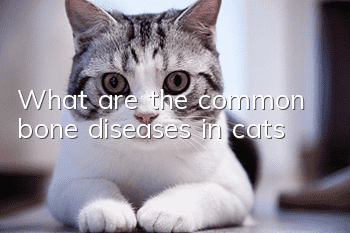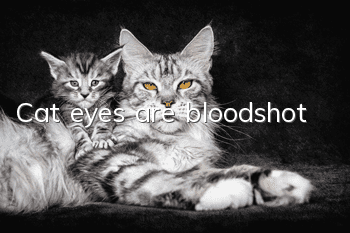What are the common bone diseases in cats?

There are many common skeletal diseases in cats, especially as they age, arthritis, bone abnormalities, and dislocations are particularly common skeletal diseases in cats. As the saying goes, it takes a hundred days for a cat to suffer from the disease. Some bone diseases will heal very slowly, so in daily life, you should prevent bone diseases in cats.
1. Paper Bone Syndrome
Muscle disease nutritional secondary hyperparathyroidism is more commonly found in kittens between 6 and 8 months old. It is caused by an imbalance in the secretion of parathyroid hormone due to an imbalance in the calcium to phosphorus ratio in the diet. Deformation and breakage, also known as "paper bone syndrome".
2. Dislocation
Abnormal movement of the relative positions of the two bones in a joint is called dislocation. The symptoms are sudden pain and the inability of the limb to bear weight. When a dislocation occurs, you should seek medical attention as soon as possible. Your veterinarian can correct the bone back to its original position after administering appropriate anesthesia.
3. Osteoarthritis
Trauma leading to bacterial invasion of joints, joint dislocation, joint infection, rheumatism, or articular cartilage degeneration due to old age are all possible causes of arthritis. The joints will be swollen, painful, red in appearance, stiff, lame, and even have fever. Veterinarians will treat them with anti-inflammatory drugs.
4. Skeletal Abnormalities
In addition to polydactyly, congenital skeletal deformities in cats are uncommon; femoral joint atrophy and patellar luxation are only occasionally seen in purebred cats. Most cats with skeletal abnormalities have osteoarthritis. Possible inflammation and symptoms of lameness.
5. Fracture
Fractures are divided into simple fractures and compound fractures in which the broken bone penetrates the skin. They have different symptoms depending on the location of the fracture. When a limb is fractured, swelling of the broken bone can be seen, or the angle is deformed or shortened; spinal fractures often cause hindquarters paralysis; rib fractures can cause difficulty breathing; pelvic fractures can make it difficult to stand; and some Japanese cats are born with this condition. The phenomenon of tail fracture; if the fracture is not handled properly, there may be blood loss, shock, and internal damage. If the cat has a fracture, it should be carefully transported to the veterinary hospital. The veterinarian will provide external fixation such as plaster and splint or internal fixation such as bone nail and bone plate to help the cat heal according to the fracture type, location and age of the patient.
6. Contusion, sprain, strain
These three types of injuries are caused by improper external force that causes injuries to ligaments, muscles and other soft tissues; contusions are caused by impact that causes capillary bleeding in soft tissues, resulting in bruises, abrasions, and pain.The pain will disappear after about 7 to 10 days. Sprains are caused by ligaments and soft tissues being twisted and injured by external forces, and can be divided into three levels according to the degree of twisting. In severe cases, the person may be unable to stand due to pain, swelling, and deformation, and recovery is slow. A strain is caused by excessive exercise of the muscles connected by the ligament. Generally speaking, it takes 7 to 10 days to heal. When your cat is lame due to the above injuries, in addition to consulting a veterinarian, placing it indoors or in a cage and forcing it to recuperate is the best way to treat it.
- What should I do if my cat scratches the furniture? Here’s how to prevent cats from scratching furniture!
- What do cats eat to help recover from cat moss?
- It turns out we all misunderstood cats
- How long does it take for a hairless cat to be pregnant and give birth to kittens?
- Cat’s belly is not big at 46 days of pregnancy
- Daily essentials for pet cats
- How to rescue a cat after drinking alcohol
- Neutered female cat keeps meowing at night
- What is normal for cat poop?
- How old is a male cat for breeding?



